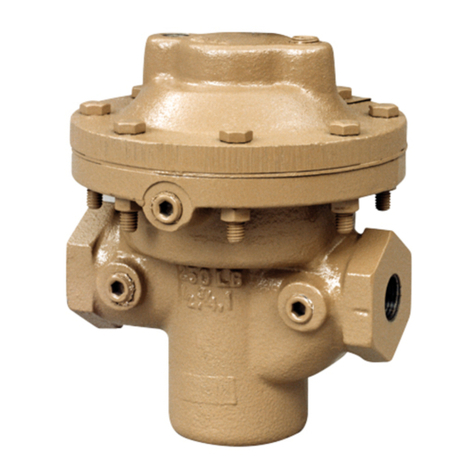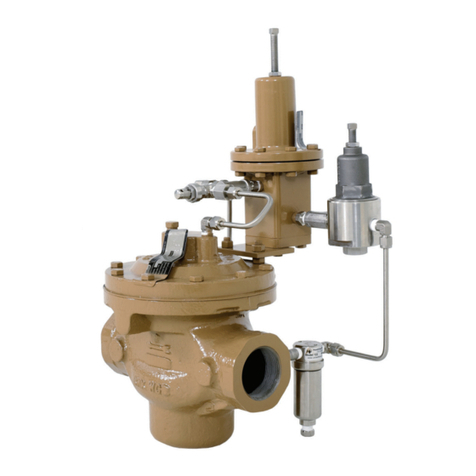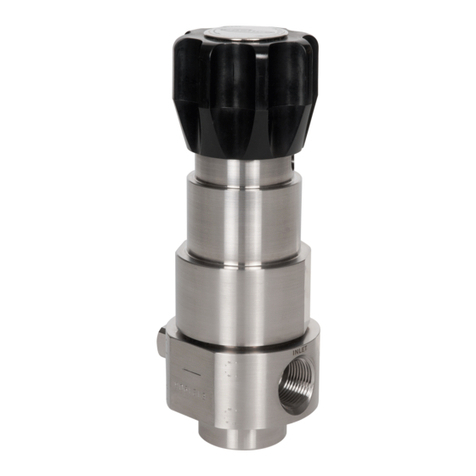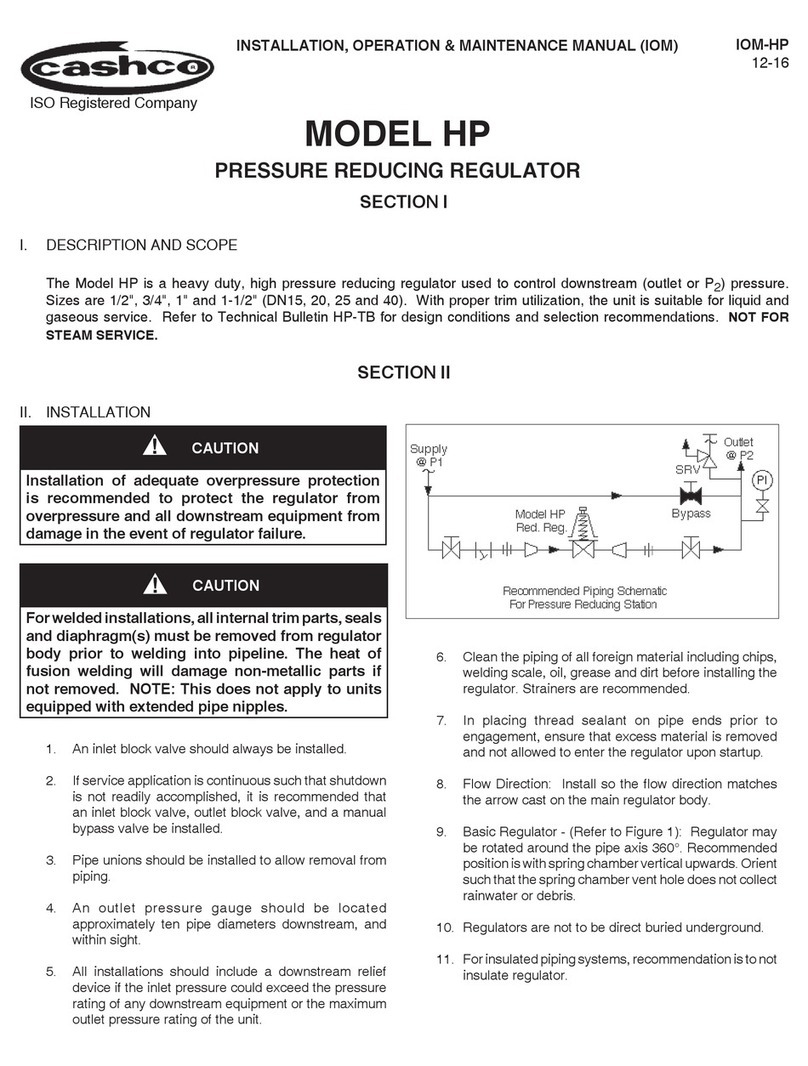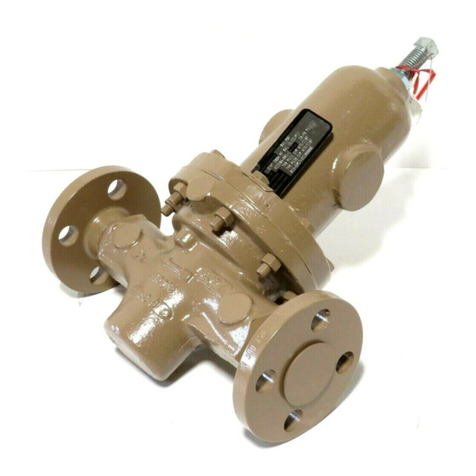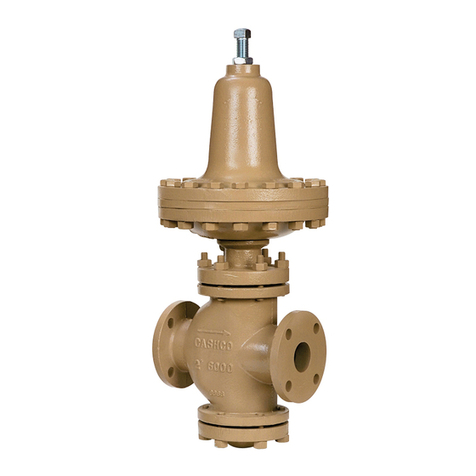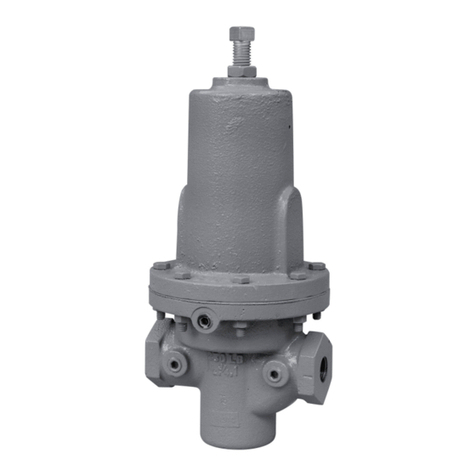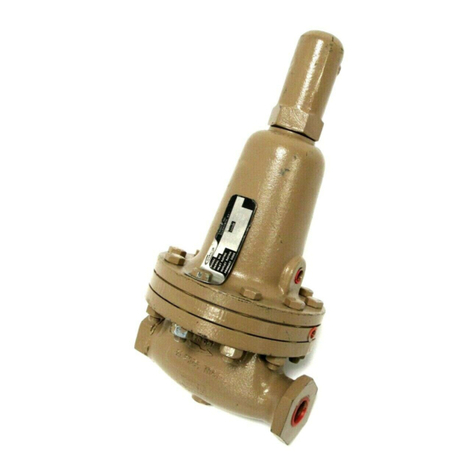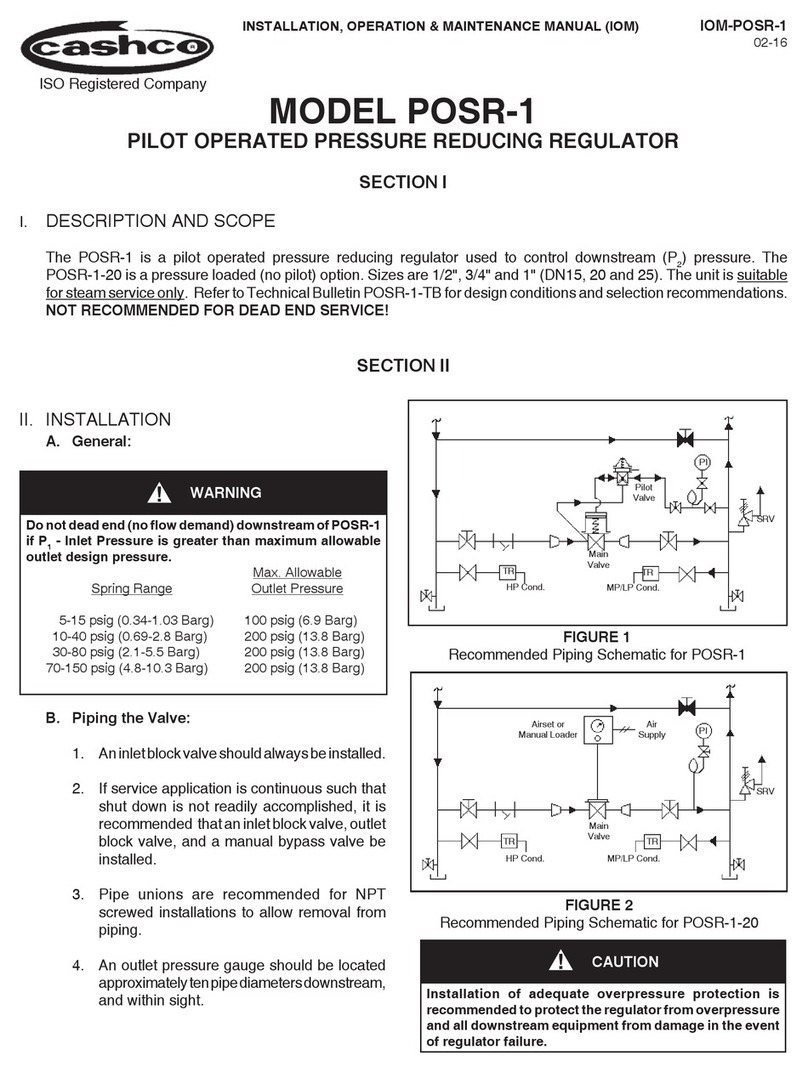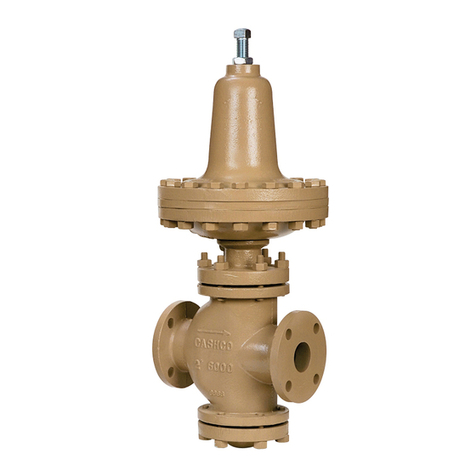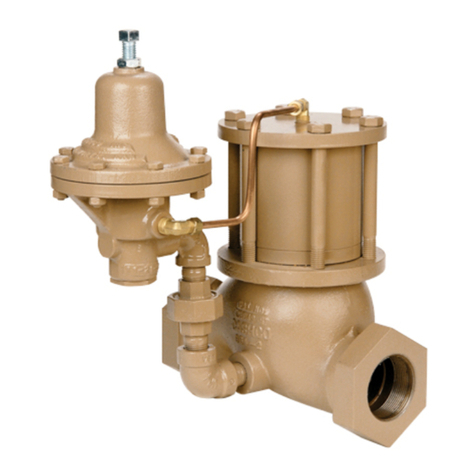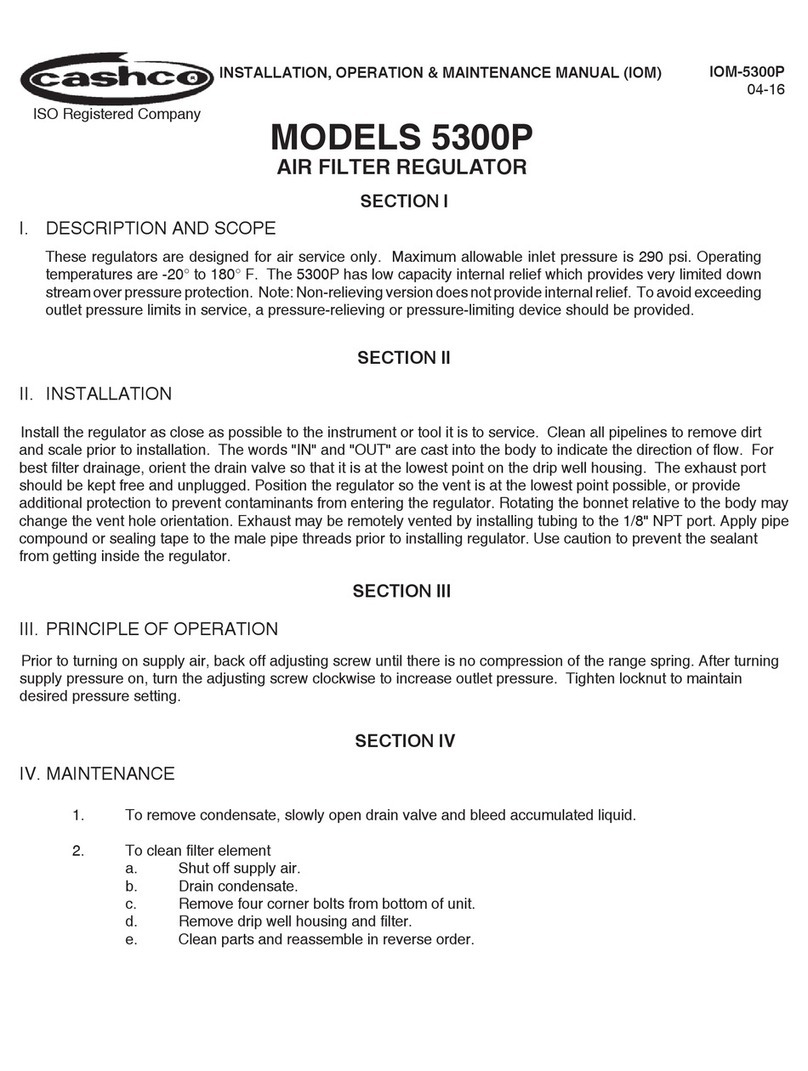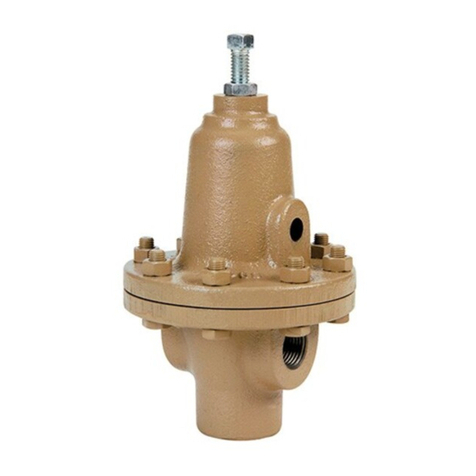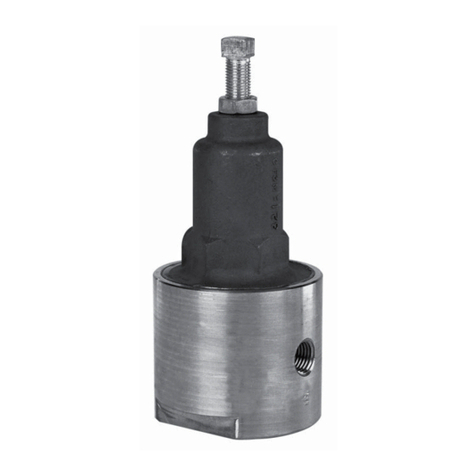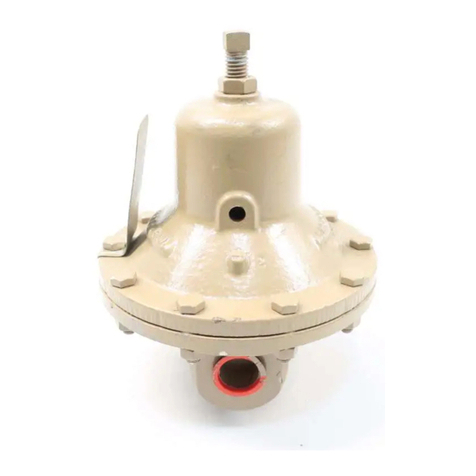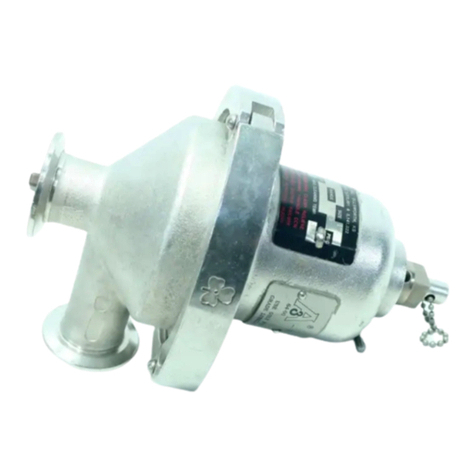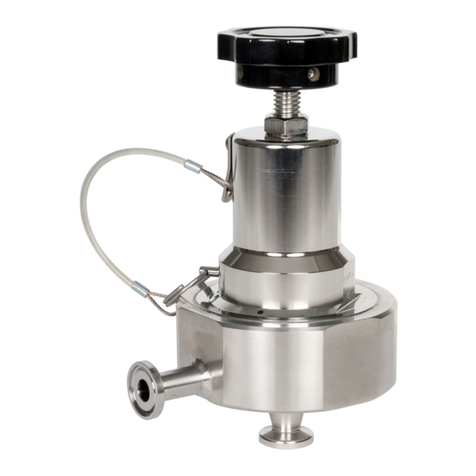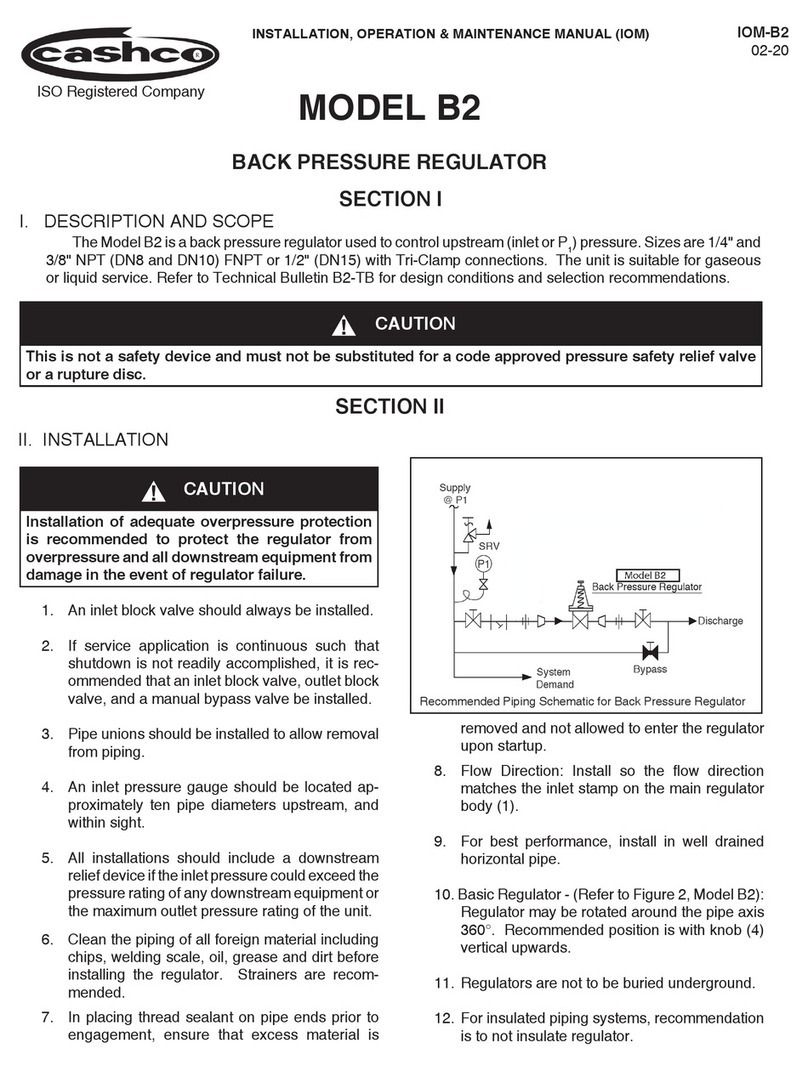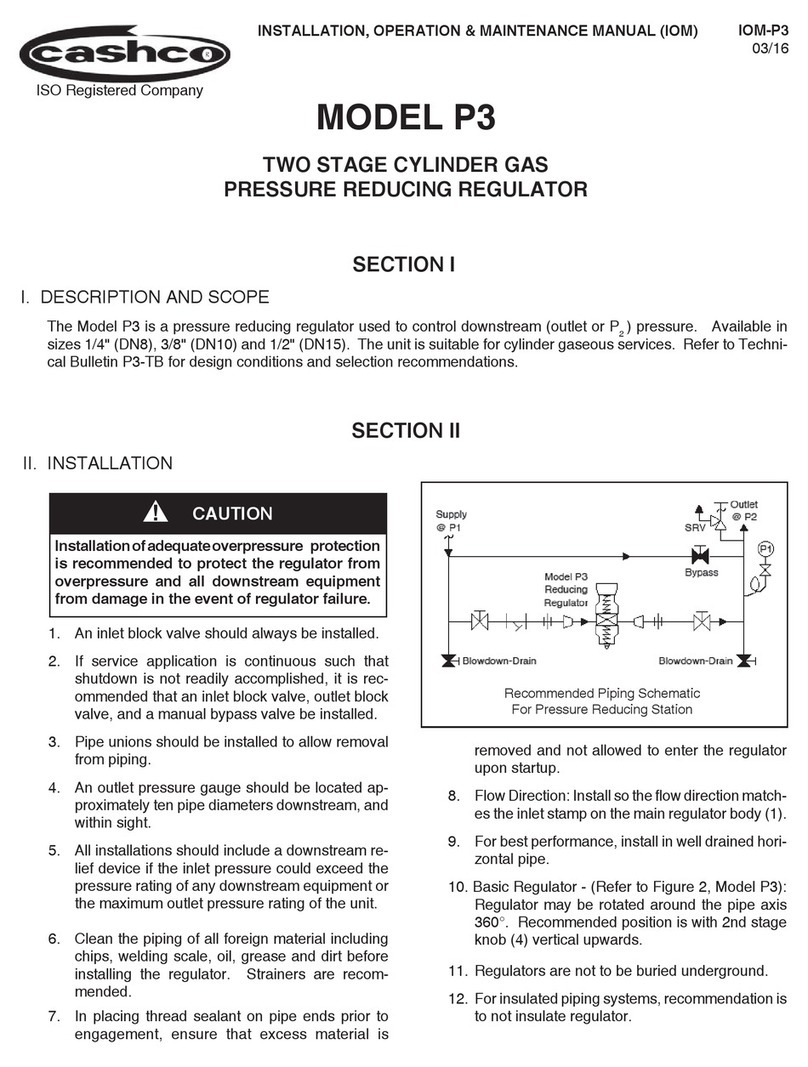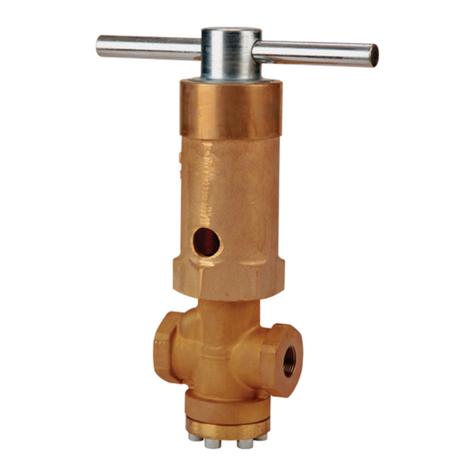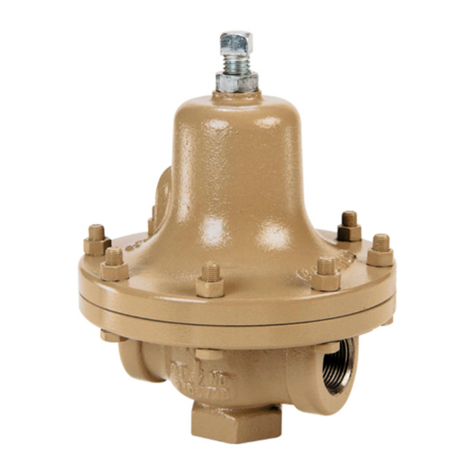
4 IOM-8311HP/LP
Model Diaphragm
Material Torque Bolt Size
8311HP ALL 45 ft-lbs (61 N-M) 5/8" Ø
8311LP ALL 45 ft-lbs (61 N-M) 1/2" Ø
8. Examine the lower guide bushing (4) for wear;
determine if debris has gathered in lower guide
bushing (4) zone. Clean, if necessary. If unable
to clean then remove per Step 16. below.
9. Remove upper body gasket (6) and clean sealing
surface thoroughly.
10. Install plug and stem assembly (12) into body (1)
and place new body gasket (6) onto body (1).
11. Align match mark and replace bonnet (2) on
body (1) and reinstall bonnet flange stud nuts (8).
Mechanically tighten nuts (8) in alternating cross-
ing pattern that allows bonnet (2) to be pulled up
evenly. Recommended torques are as follows:
12. Fully thread stem lock nut (19) and pusher plate (17)
on end of plug and stem assembly (12). Refer to
Figure 1 for correct orientation of the pusher plate
(17).
13. Calibrate diaphragm (20) setting and correct plug
and stem assembly (12) travel as follows:
a) Hand press plug and stem assembly (12) tight
into the seats (10 and 11).
b) Adjust the pusher plate (17) so that the gasket
surface face of the pusher plate (17) is flush with
the top of the diaphragm case (14) flange.
c) Draw the stem lock nut (19) up tight against
the pusher plate (17) by holding “flats” milled
on pusher plate (17).
14. Grasp threaded end of plug and stem assembly
(12) by hand and ensure that the assembly moves
freely by lifting the plug and stem assembly (12)
in and out of the seats (10 and 11), making sure it
does not “stick”. If it does not move freely, rotate
plug and stem assembly (12) CW until new posi-
tion is found which allows optimum “free vertical
movement” in and out of seats.
15. Proceed with diaphragm (20) assembly instructions
in accordance with Section IV.B., steps 10 through
18. NOTE: Do not rotate plug and stem assembly
(12) from optimum “free vertical movement” position
during final assembly.
16. If necessary, remove bottom flange (3) bolting
(7)(8). Clean cavity. Examine lower guide bushing
for wear. Replace bottom bonnet if lower guide
bushing is worn or damaged.
17. Replace bottom flange (3) on body (1) and re-
install bolting(7)(8). Mechanically tighten nuts (8)
in alternating crossing pattern that allows bottom
flange (3) to be brought up evenly. Refer to Step
11. for recommended torques.
Regulator Size Torque Bolt Size
1-1/2" - 2" 50 ft/lbs (68 N-M) 1/2" Ø
3" - 4" 50 ft/lbs (68 N-M) 5/8"Ø
NOTE: Never replace bolting (29) (30) with just
any bolting, if lost. Bolt heads and nuts are marked
with specification identification markings. Use only
proper grades as replacements.
17. Reinstall adjusting screw (or T-bar) (32) with lock
nut (or lever) (33). Rotate number of revolutions
recorded in Step 2. above.
18. Pressurize inlet portion of valve. Soap solution test
around bolting (29)(30), diaphragm case (14), and
spring chamber (13) flanges for leakage. Ensure
that an inlet pressure is maintained during this leak
test of at least mid-range spring level; i.e. 10-40
psig (.69-2.76 Barg) range spring, 25 psig (1.72
Barg) test pressure minimum.
C. Trim Inspection:
1. To inspect the internal trim parts, refer to Section
VI.A. and B.1 through 9 for diaphragm replacement
and proceed as follows.
2. Secure the “flats” on the threaded end of the plug
and stem assembly (12) with adjustable wrench
and remove pusher plate (17), stem lock nut (19)
by rotating CCW (viewed from above). NOTE: Do
not rotate the plug and stem assembly (12).
3. Draw or embed a match mark between body (1)
and bonnet (2).
4. Loosen and remove bonnet flange stud nuts (8)
CCW (viewed from top) and remove bonnet (2).
Inspect the upper guide bushing (4) for excessive
wear. Replace, if worn. NOTE: DO NOT REMOVE
BOTTOM FLANGE (3). The bottom flange (3) acts
as a guide to align the plug and stem assembly
(12) into the seat rings (10 and 11).
5. Firmly grasp end of plug and stem assembly (12)
by hand and pull out of the body (1) cavity.
6. Inspect the seating surfaces of the plug (12.1) for
nicks or excessive wear.
7. Using a flashlight or other light source, examine
the interior of body (1) cavity. Also, inspect the
seating surfaces of both the upper and lower seat
rings (10 and 11) for excessive wear. If either the
plug (12.1) or the seat rings (10 and 11) are worn
and in need of replacement, contact the factory
for authorization to return unit for repair. NOTE:
Overhaul and replacement of trim parts is not easily
accomplished by non-factory trained personnel.
(29) and nuts (30) by hand tightening. Mechani-
cally tighten bolting (29) (30) in a crossing pattern
that allows spring chamber (13) to be pulled down
evenly. Recommended torques are as follows:
